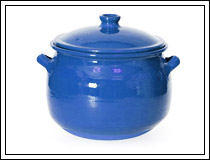Clay Pot & Porous Capsule Irrigation in Brazil
Water shortage is a matter of great concern- both locally and on a global scale. And with worldwide need for restoring dry lands and optimizing agricultural yield from arid areas and deserts, water supply system used in irrigation has been undergoing rapid changes in almost all parts of the globe. For instance, even countries like Brazil that are naturally rich in water, are also experimenting with alternate and appropriate irrigation systems for maintaining consistency, and at times for improving their overall agricultural output.

Hydro-climatic regions and irrigation systems vary widely in Brazil. Especially, subsistence farmers based on the tropical & semi-arid regions of the country who are dependent on adequate rainfall for almost all of their agricultural activities encounter many problems during crop production, particularly in years of low rainfall. To make matters worse, conventional systems of irrigation fail in supplying huge volume of water to most agricultural plots in the region. At such times, agricultural output is severely affected in these areas and utilization of appropriate and effective irrigation technologies becomes a prerequisite.
To battle such critical irrigation demands, use of porous or clay pot irrigation systems was introduced in Brazil in the year 1978. With highly efficient and economical use of water, these systems ensure healthy cultivation in normal, saline, and saline-sodic soils on small amounts of water in various parts of Brazil. Aside Brazil, this irrigation practice is also applied for small-scale agricultural irrigation including restoration, gardens, landscaping, and farming in the arid and semi-arid regions of Argentina, Ecuador, Bolivia, and Mexico.
Clay Pot & Porous Capsule Irrigation- The Technology
Clay pot & porous capsule irrigation is not a novel irrigation technology. It was employed by the Romans as a major irrigation technique for many centuries. These days, this ancient irrigation system has been innovated and reapplied as a low-volume irrigation technology in water-scarce areas of different parts of the world. The technology is well accepted and mostly applied in the semi-arid regions of northeastern Brazil.
The system is based on storing and distributing water to the soil, by the method of using simple clay pots or porous capsules interlinked by plastic piping. Maintaining steady hydrostatic pressure is important and it is regulated by using a constant-level reservoir. Clay pots used in the method are designed with clay or clay mixed with sand and then baked in home furnaces. These pots are conical in shape with an open top. For irrigation, these pots are partially buried in the soil in such a manner that only the rims are extended above the ground. The pot rims are coated in white to reduce evaporation, and uniform porosity and permeability is ensured by distribution through plastic (PVC) piping that interconnects the capsules.
Advantages of Clay Pot & Porous Capsule Irrigation Technology
- Economical technology
- Easy operation and maintenance
- Environmentally friendly
- Soil erosion is reduced
- Comparatively higher agricultural yield
- Can be implemented at lower air temperatures
- Low infiltration losses
- Reduced fertilizer usage
- Effective even in arid regions and salty soils
-
 Highly suitable for small agriculture communities and family gardens Highly suitable for small agriculture communities and family gardens
- Weed growth is greatly reduced.
Disadvantages of Clay Pot & Porous Capsule Irrigation Technology
- Limited application – suitable only for small-scale agricultural activities
- Technology becomes ineffective in rocky soils
- Broken pots or capsules may hamper the irrigation operation
- The rate of water release may vary from pot to pot
- Plants featuring extended root systems are difficult to cultivate implementing this technology.
|